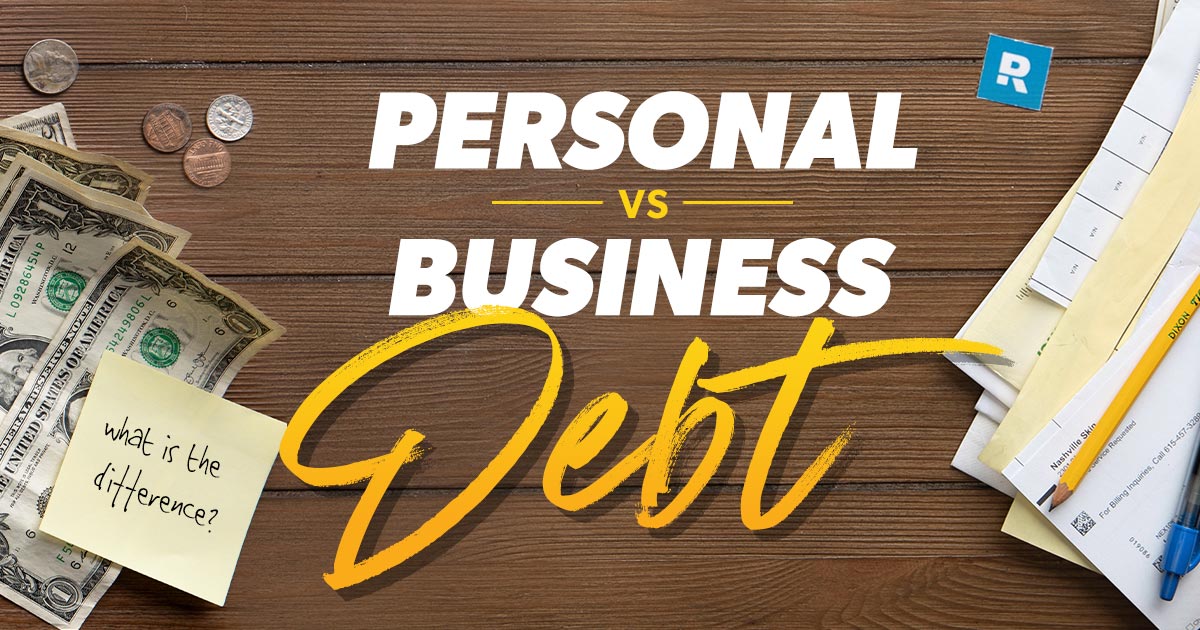You’ve probably heard the saying “If it looks like a duck, swims like a duck, and quacks like a duck, then it probably is a duck.” Well, in this case, debt is the duck. No matter what form it comes in, what it’s used for or what it sounds like . . . debt is debt. Seventy-eight percent of Americans are living paycheck to paycheck—and that’s just their personal debt.1 What about business debt? Is there a difference?
Here’s the deal: Unless you’re a million-dollar company, personal debt and business debt are one and the same. Stick with us, and we’ll explain.
What Is Business Debt?
Business debt is any amount of money you’ve borrowed in order to run your business. It might be a business loan you took out from the bank to start your cupcake business or the money you borrowed from those angel investors (ahem—Mom and Dad) to put a down payment on your retail space downtown.
Pay off debt fast and save more money with Financial Peace University.
A quick search in the Merriam-Webster dictionary for “business debt” will land you . . . nowhere.2 That’s because business debt is a tricky thing, and most people don’t know where the line from personal debt and business debt begins and ends.
Business Debt vs. Personal Debt: What’s the Difference?
Business debt and personal debt can be easily mixed up depending on how you run your business and how clean you keep your books. But when it comes to business debt, it’s any money you’ve borrowed in order to start your company (or keep it afloat).
Listen closely: Unless your business is bringing in over a million dollars a year, most of your business debt is likely considered personal debt. Here’s a surefire way to know the difference:
- Did you sign the loan in your name? If so, then it’s a personal loan.
- Who will those loan sharks come after if your business can’t pay? If they’re coming after you, then it’s a personal loan.
- Will you lose any personal property if you don’t hold up your end of the deal? If so . . . you’ve got a personal loan on your hands.
When you walk into a bank asking for money for your small business, they’re going to ask for your signature. That means when you sign off on that loan, you’re agreeing to the terms of repayment. And if for some reason you miss a few payments, the bank is going to be knocking on your front door asking for their money. And if you can’t repay, they’ll come for your home or any other personal assets you might have . . . because the loan is in your name.
Don’t worry, there are ways to protect yourself from that happening. But the biggest thing you need to know is that when it comes to business debt and personal debt, you should treat them the same—at least in your mind.
How to Pay Off Business Debt
Normally, the tried-and-true way to pay off debt is a little something we like to call the debt snowball. The debt snowball is step two of the 7 Baby Steps. After you save up $1,000 for a starter emergency fund, it’s time to start plowing through debt. Here’s how it works:
List your debts from smallest to largest. Pay minimum payments on everything but the smallest. Attack the smallest debt with everything you’ve got (and we mean everything). Once that debt is paid off, apply its payment to the next smallest debt while making minimum payments on the rest. Keep growing that snowball! The more you pay off, the more your freed-up money grows and gets added to the snowball.
But with business debt, we recommend you do things just a bit differently . . .
First, you’ll want to pay yourself a living wage. Now, you don’t want to be paying yourself enough for that brand-new Tesla you’ve had your eye on (not yet anyway), but you also don’t want to be scraping by, living off nothing but ramen noodles and Spam.
After you take out a living wage, you’ll start paying down that business debt. We recommend a large percentage of your profits go toward kicking that debt to the curb while the rest goes toward building your retained earnings (more on that in a little bit).
Since you’re the boss, you get to choose what percentage of your profits you want to start pouring on that fiery mountain of debt. But remember, giving up a higher percentage now means you’ll be out of debt in no time. For example, you might decide you’re an 80/20 type of person. Put 80% of your profits toward your debt and keep 20% for building on your retained earnings.
So, what is retained earnings? Great question. Think of it as both an emergency fund and an opportunity fund for your business. Not only will it help you out when those slow months come along, it’ll also help you when that deal of a century makes its way to your front door. Yup—this money helps you say yes when opportunity comes knocking.
Business can be lonely . . . but it doesn’t have to be. So, whether you’re a solopreneur or have a thriving team working with you, there’s no shame in getting advice to help you on your journey to success. Check out EntreLeadership Elite. We’ll help you take the guesswork out of business by creating a customized plan for you (that actually works).



